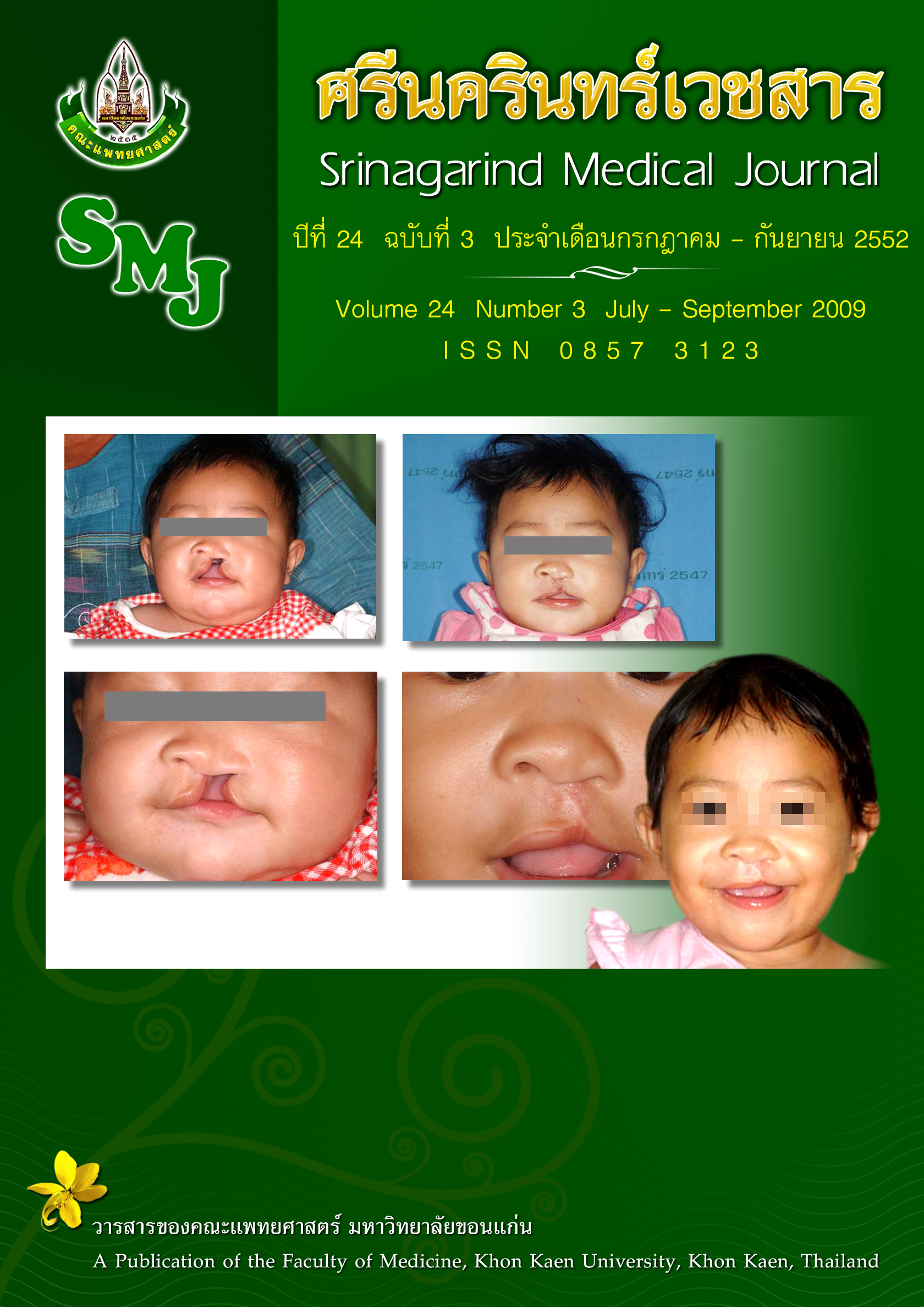Predictive Statistical Model for the Risk of Cholangiocarcinoma in Northeast Thailand
Abstract
Background and Objective: Cholangiocarcinoma (CHCA) is the most common cancer in Thai people especially in the Northeast of Thailand. Primary prevention is very important for CHCA control. This study attempted to find the exposures associate with CHCA in order to develop a predictive statistical model for CHCA in people in Northeast Thailand.
Methods: This study was carried out in 2007 as a nested case-control study within the Khon Kaen cohort study at Cancer Unit, Khon Kaen University. The cohort recruitment was performed during 1990 to 2001. There were 108 CHCA cases occurred in the cohort and individual matched control was randomly selected for each case (1:1), matched by age, sex and date of recruitment to the cohort.
Results: For the predictive model, was: logit (CHCA) = 0.69 X Opisthorchis Viverrini, OV (egg in stool finding) with the precision of 56.48% (95%CI:= 51.25-61.71), sensitivity 54.02% (95%CI: = 46.32 - 61.59), specificity 66.67% (95%CI: = 50.45 - 80.43), positive predictive value 87.04% (95%CI:=79.21-92.73) and negative predictive value 25.93% (95%CI:=17.97-5.25).
Conclusion: The results of this study suggested that OV infestation has high association with CHCA. To reduce the incidence of CHCA, liver fluke control is priority work for health policy.
Keywords: Cholangiocarcinoma, Risk factors for cholangiocarcinoma, Predictive model for cholangiocarcinoma




